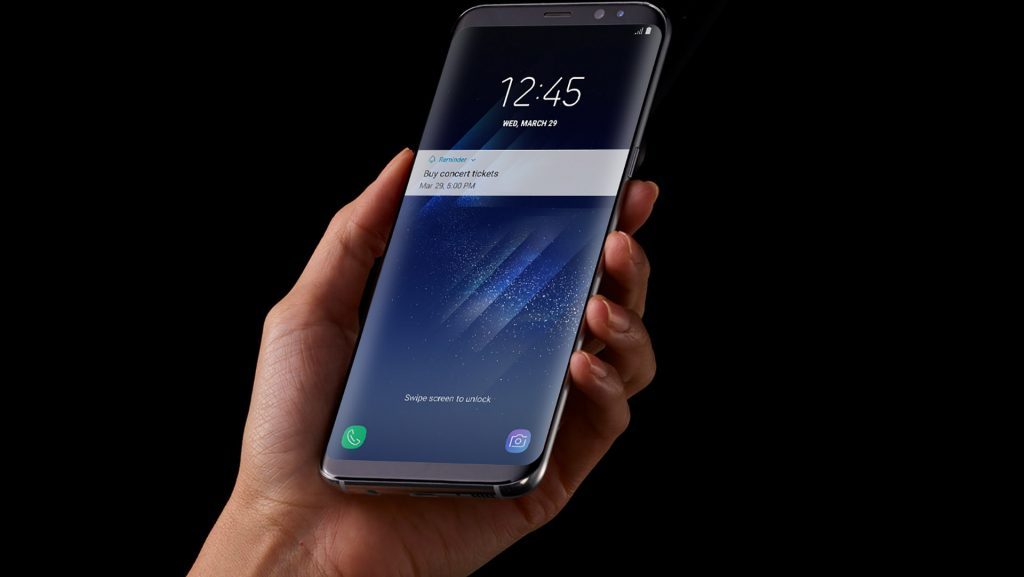The Samsung Galaxy S9 is coming, according to the FCC’s website. Both the Samsung Galaxy S9 and S9 Plus are due for release in the U.S. market with model numbers of the S9 and S9 Plus to be SM-G960U and SM-G965U respectively. Additionally, both models of the phone will be compatible with all major U.S. networks.
Design and Price
Design-wise, a Twitter post reveals that the Galaxy S9 will have a vertically stacked camera lens and fingerprint sensor on the rear, flanked by a flash unit and other sensors. The front has similarly sized bezels above and below the screen, and a USB Type-C port and a 3.5mm headphone jack can be spotted on the bottom of the phone. It also appears that the phone will retain its IP68 rating.
Another thing we noticed from the leaked images is that the Galaxy S9 has a single camera lens on the back, while another render that may show the Galaxy S9 Plus shows the large phone may get two camera lenses.
Samsung announced the Galaxy S8 at the end of March 2017, and a yearly update cycle is traditional for Samsung’s flagship phones. In fact, Samsung President of Mobile Business DJ Koh has confirmed the company will be debuting Galaxy S9 at Mobile World Congress (MWC) at the end of February, which correlates with a report from Bloomberg that said the Samsung Galaxy S9 would be announced in February 2018, and shipping would commence in March.
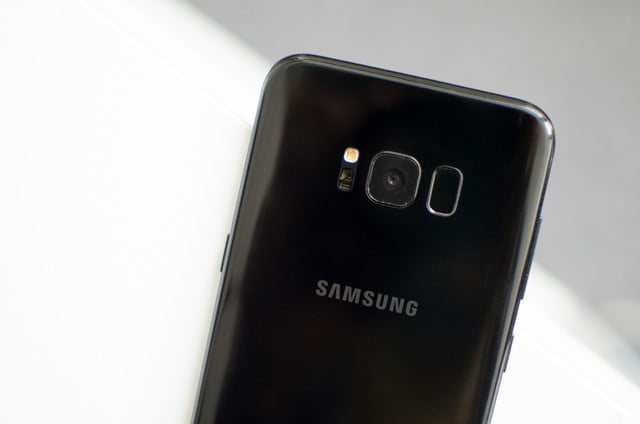
Camera
It’s no secret that the Galaxy S8’s camera is awesome, and no doubt the S9 will be equally as good if not better. Rumors point to the Galaxy S9 having a single rear camera, and the Galaxy S9 Plus having a dual-lens camera. Additionally, based on some other leaked images, Samsung may add a dual-sensor shooter to the Galaxy S9 Plus, similar to the way Apple differentiates between the iPhone 8 and the iPhone 8 Plus.
It also looks like the Samsung Galaxy S9 will feature a Super Speed Dual Pixel 12MP OIS (F1.5/F2.4) with a variable aperture camera that will switch between F1.5 and F2.4 based on lighting conditions. Samsung is working on a sensor capable of shooting at 1,000 frames per second, according to some reports, and is expected to enter mass production months ahead of the Galaxy S9’s rumored release date, leaving plenty of time for Samsung to incorporate it into the design. Packaging for the Galaxy S9, first leaked on Reddit, seem to confirm a Super Slo-mo feature and an 8MP AF Selfie Camera.
Display and Speakers
Another rumor circulating concerns the speakers. While the S8 speaker set was sub-par, the s9 will have stereo speakers. It also looks like Samsung partnered with AKG, who are actually owned by Samsung, to bring high-end audio to the Galaxy S9. Headphones for the S9 appear to get the AKG treatment as well.
The Galaxy S8 set a precedent for Samsung’s flagships with its edge-to-edge curved display, around the same time that many other manufacturers were also introducing 18:9 aspect ratio displays. The Galaxy S9 appears to have the same cool design and will also include the same 18:5:9 ratio and resolution screen as the S8. Reports also indicate that the screen-to-body ratio may still change, as this will depend on the size of the bezels, rather than a different screen. Other rumors have indicated a 90 percent screen-to-body ratio is possible for the Galaxy S9, shrinking the already thin bezels down even further.
This fits in with a previous rumor saying Samsung had decided on screen sizes for the Galaxy S9 and S9 Plus. According to South Korean publication The Bell, by way of The Investor, the regular-size S9 will feature a 5.77-inch panel, while the bigger S9 Plus will sport a 6.22-inch screen. Those sizes are exactly the same as the Galaxy S8 and S8 Plus.
While the device will likely retain the same shape and form as past Galaxy devices, it’s still unclear whether it will include the rounder Galaxy S8 display or if it’ll mimic the squared-off shape of the Note 8’s screen.
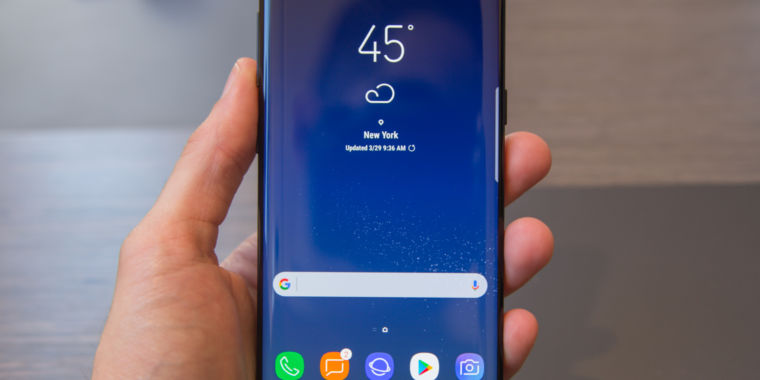
Software and Security
While any new software remains somewhat unknown, a Samsung press release issued not too long ago hints at an improved facial unlocking, Animoji-type features and maybe even AI in the form of a more personalized intelligence system. While the press release focuses on features about the Exynos 9 Series 9810, the chip is almost guaranteed to be used in the Samsung Galaxy S9.
According to SamMobile, Samsung’s engineering team has kicked off development of two separate sets of firmware for the Galaxy S9, one for the regular-size phone (G960FXXU0AQI5) and the other for the S9 Plus (G965FXXU0AQI5). The code names would appear to confirm the rumored model numbers, SM-G960 and SM-G965.
More about unlocking: Both a fingerprint sensor and an iris/facial scanner are rumored for inclusion. Samsung may be improving the iris scanner for the Galaxy S9, over the one provided on the Galaxy S8. An anonymous source reports that the iris camera lens will be increased from 2 megapixels to 3 megapixels for the Galaxy S9, helping it recognize faces in more challenging environments, and also when the eyes move during scanning or are behind glasses. The improved iris scanning capabilities appear to be confirmed by a recent press release from Samsung.
The new lenses will also be accompanied by updated and improved software, according to the source, which will also increase accuracy and lower the response time. It’s claimed the response time will fall by an entire second over the current lens system fitted to the S8 and Note 8.
Although it was unable to integrate such technology in the S8 and Note 8, rumors persist that Samsung wants to build the fingerprint sensor into the Galaxy S9’s display, but a new report notes that the company may have ditched those plans. Apparently, Samsung has been working on an in-display sensor for years, but keeps running into technical difficulties that prevent the tech from working properly.
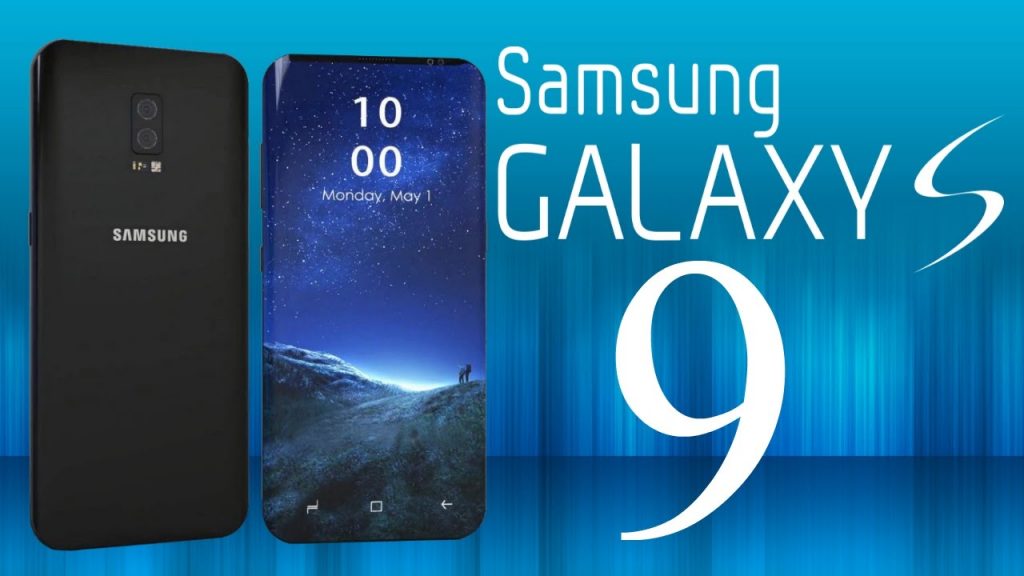
Specifications
The Galaxy S9 line will undoubtedly have the best specs of all of the Samsung phones. Like previous iterations, the Samsung Galaxy S9 will likely have two different chips. U.S. models will likely feature Qualcomm’s latest and greatest Snapdragon 845 chip, while international models will have run on the Exynos 9 Series 9180. According to Forbes, the Galaxy S9 will be the first phone to feature a Snapdragon 845 chip, and an agreement between Samsung and Qualcomm ensures the smartphone manufacturer has exclusive access to the chip for a few months.
Storage-wise, the Galaxy S9 may have eight times the built-in storage capacity of the S8. A December 2017 announcement from Samsung stated the company began mass-production of a 512GB flash storage solution for future mobile devices. While it did not confirm which phones would have the chip, it would most likely make its first appearance in the company’s flagship Galaxy S9. Earlier reports from other news sites indicate that the phone will ship with 64GB of storage with 4GB of RAM on board.
For those who were hoping the Galaxy S9 would launch with Android Oreo 8.1, you may be disappointed. Reports suggest that the S9 will ship with Android Oreo 8.0. Also, the U.S. version of the Samsung Galaxy S9 will likely feature a Snapdragon 845 chip. Qualcomm’s latest processor boasts better performance, improved image processing, a much improved Gigabit LTE modem (up to 20% faster), better battery efficiency, and the 845 processor will feature a sophisticated onboard AI processing platform called Hexagon 685 DSP, which will rival that of Apple’s A11 Bionic chip. A press release from Samsung appears to confirm that the processor will feature four processors with speeds up to 2.9GHz.
The press release also listed the Isocell SLIM 2X7, which allows for a thinner camera module. This could also mean that Samsung is planning on making the Samsung Galaxy S and Note flagships even thinner than its predecessors. But Samsung made no references to the Galaxy S9 in its announcement, so it’s still unclear if the innovations listed on its press release will apply to the device.
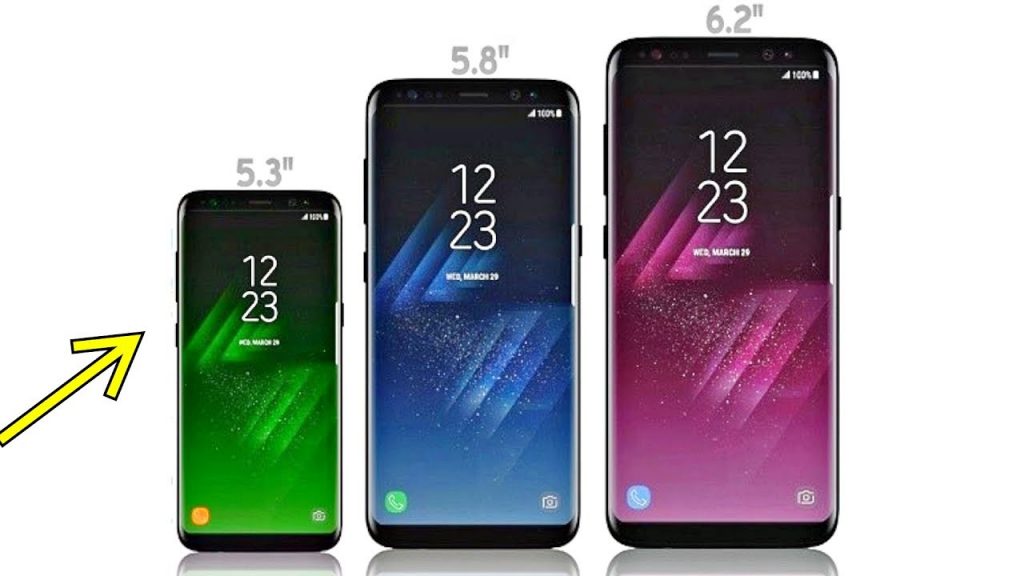
Samsung Galaxy S9 Mini
According to a recent tip, Samsung could also be working on a full-screen compact smartphone, the Galaxy S9 Mini. Unfortunately, the tipster wasn’t able to confirm the unit’s identity but did describe the device to have a small, full screen that’s less than 5 inches.
Comment on this article and other GadgetGram content by visiting our Facebook page, or our Twitter and Instagram feeds.

